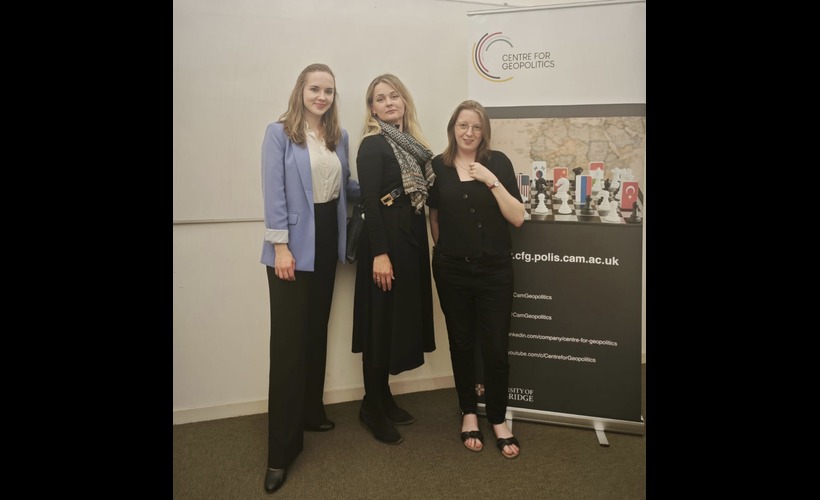By Dr. Donatas Kupciunas
Recently, Russia has been demonstrating its battle-readiness by amassing around 100,000 troops on its border with Ukraine. On the diplomatic front, Russia initiated negotiations with the US and NATO, presenting the latter with a list of demands, at the top of which was a legally binding assurance that Ukraine would never be admitted to the Alliance. It is not clear if Russia treats these negotiations seriously. It is equally hard to imagine NATO publicly making such a non-admission declaration. What is certain, however, is that while Russia did not actively oppose NATO membership of e.g. the three Baltic states, it has proved to be willing to go to war in order to forestall NATO’s expansion into Ukraine.
NATO itself is deeply divided over Ukraine’s membership, which would technically require unanimous agreement. On the hottest side of the spectrum are Poland and Lithuania, who have been the fiercest supporters of Ukraine’s pro-western aspirations. On the coolest side is Germany, which Ukraine blames for blocking NATO supply of small arms in the face of imminent aggression. Such divisions kept the idea of Ukraine’s NATO membership dormant ever since its half-hearted announcement in the 2008 Bucharest NATO summit, a few months after which Russian tanks rolled into Georgia. In 2022, Ukraine’s NATO chances are even more uncertain, not least because support for Ukraine’s NATO membership is no greater on the other side of the Atlantic. Just recently, in a move that could be construed as the opposite of deterrence, the United States was quick to inform Russia that it would only fight a very limited proxy war over Ukraine, if at all. To critics, all talk about Ukraine’s NATO membership is nothing but a load of hot air.
Russia, however, does not see it as such and appears to take hints on Ukraine’s future NATO membership very seriously. First and foremost, Russia sees it as a preventable strategic disaster, which could bring NATO missiles minutes away from Moscow, and which would render its existing strategic doctrine useless. Fundamentally, Russia sees NATO as a collective of anti-Russian chancers. It has witnessed NATO using force even in the absence of agreement among its members, and in cases where the international legal basis for military intervention was shaky. Russia closely follows NATO-Ukraine cooperation, including weapons transfers to Ukraine, and suspects that it only sees the tip of the iceberg. Finally, Russia thinks that Ukraine’s formal and irreversible shift westwards would contribute to the forcible erosion of the already shrinking pro-Russian element in Ukraine, and it hopes to reverse that process by restoring its dominance.
On the ideological level, Russian rulers are not troubled by the thought that Ukrainians might have legitimate grounds to look westwards. According to the Russian view, if more and more Ukrainians want to follow the example of the Baltic states and if they increasingly support NATO membership, it can only be because they have been corrupted by western propaganda. Russia would not admit that in the market of ideas, the ‘Russian world’ is nowhere near as competitive, or powerful, as its Soviet predecessor of the Cold War was.
And then there is Ukraine itself, which is often missed as a subject in its own right when discussing its future in a realist-anthropological fashion. To many Ukrainians, especially to those in the west of the country, Putin’s Russia with its blatant autocracy, state-controlled media, murder of dissidents, staggering wealth inequality, and widespread corruption, is something that can only be abhorred rather than emulated. To them, market access, cheap resources, and narratives about historical Slavic affinity do not outweigh the negatives of being part of Putin’s ‘near abroad’. While there is a sizeable pro-Putin element in the east of Ukraine, polls suggest that pro-western and pro-NATO attitudes are overall in the lead.
Many wonder, though, why, if NATO does not intend to admit Ukraine as its member, and if any such posturing is provoking Russian aggression, the West continues to keep the question open? It cannot be deterrence, because rhetoric on Ukraine’s NATO membership risks producing exactly the opposite effect. It might thus appear that the West finds itself in a rhetorical trap. For those with democratic instincts, it is only natural to express sympathy for the Ukrainians, who denounce autocracy, who want a better life, and who have to face a much stronger adversary alone. More importantly, being upfront about Ukraine’s real NATO chances in talks with Russia would be politically costly, inviting comparisons with the appeasement of the late 1930s and with the infamous Molotov-Ribbentrop pact.
Recently, the former NATO Secretary General Anders Fogh Rasmussen has sought the way out of this trap by proposing to admit Ukraine into NATO, but to limit Article 5 guarantees to Ukrainian territories that are currently not under Russian occupation. This idea resembles the solution found for Western Germany in 1955 when it was admitted to NATO despite its formal claims to East Germany and to parts of Poland. The difference, however, is that the Soviets were satisfied with the location of the ‘iron curtain’ to which they themselves agreed at Potsdam. Putin’s Russia, on the other hand, considers any western meddling in Ukraine as illegitimate.
Critics charge that while Western rhetoric about Ukraine’s NATO membership is not without noble intentions, it is risky. This policy was certainly one of the catalysts for Russian aggression in 2014, and may well provoke further incursions involving human costs. On the other hand, had the West acted with resolve in 2014, Putin’s appetite for new conquests today would have arguably been much less. Ultimately, NATO will have to find a way out of its rhetorical trap. Depending on one’s standpoint, this would involve either an acceptance of Russian dominance in the area or a credible guarantee of the Ukrainian territories currently not under Russian occupation.







